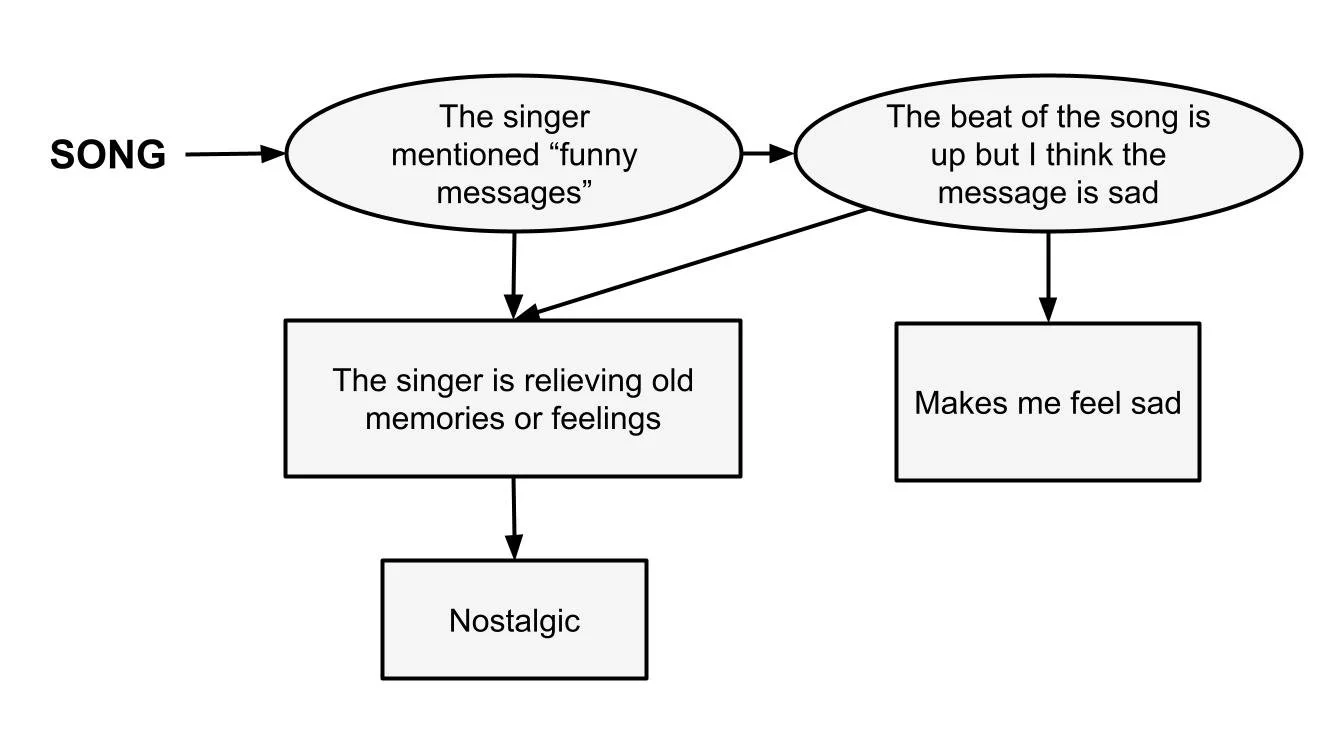By Kin Ho Wong, University of Groningen - winner of the 2022 IASPM Popular Music Thesis Prize [MA]
How do people perceive music? What do they really "hear" from it?
While many have attempted to explain music perception from psychological aspects, such as how certain musical features can evoke specific emotions, the results may not always be conclusive as different listeners may perceive different emotions from the same song. Sometimes, it is easy to attribute these differences in perception to individual psychology and personal experience, but could there be more to it than that? Unlike visual stimuli, in which the information is visible, music comprises of numerous elements with information that can be difficult to precisely recognize and illustrate. Furthermore, lyrics (for example, in pop songs) can add a layer of complexity to the music-listening experience. This complexity makes exploring various perceptions of pop songs interesting yet challenging for qualitative studies within the humanities.
During a pilot study, I utilized a somewhat conventional approach by requesting research participants to write a review while experiencing musical stimuli. This study yielded some initial findings regarding how listeners perceive emotions in pop songs and how existing approaches can provide some insights into exploring perceptions. However, it also revealed certain limitations and drawbacks associated with conventional methodologies, which led to challenges in understanding the cognitive processes involved in their perception. For instance, participants often struggle to articulate their cognitive processes, resulting in general responses such as "the song makes me feel sad". This leaves researchers uncertain about how the listener's perception of sadness is formed or elicited and how the stimuli are being cognitively processed. Furthermore, to what extent does the listener consciously judge the song, or is the elicited emotion a result of an innate feeling? This distinction may not be a consideration of researchers who view perception as a result of cognition. Still, this is crucial for understanding the relationship between stimuli and perceptions, as they represent two distinct cognitive processes. In response to such issues, the think-aloud strategy is sometimes utilized in studies exploring cognitive processes in art experiences. However, this approach is unsuitable for music perception research as it disrupts listeners' auditory experience.
Consequently, while concerning emotion in Thai pop songs and their perception in my thesis, I devised the methodology Cognitive Process Map to overcome the challenges in research and hope to gain a more profound comprehension of cognitive processes in the perception of musical stimuli. The Cognitive Process Map is a tool that goes beyond the traditional mind map and process map. It guides individuals to present their cognitive process in an open-ended and organized manner when perceiving musical stimuli, referencing the computational model used in (emotion) perception studies. When creating a Cognitive Process Map, it is recommended to construct the map on paper rather than in digital formats, as this allows for greater freedom and flexibility in the mapping process and for researchers to track the changes (if any).
The below illustrates the basic structure of a Cognitive Process Map:
The structure may also vary, as shown in the following examples (adapted from the hand-drawn pictures collected in my research) :
Upon collecting data by the Cognitive Process Map, researchers can code and analyze it using the selected method that aligns with their research purpose. In my research, I utilized Cognitive Discourse Analysis, devised by Thora Tenbrink to examine language data extracted from the Cognitive Process Maps created by the participants, thus identifying features of the cognitive processes in the perception of emotion in pop songs that can be categorized into various cognitive styles.
The results indicate that while the way participants perceive musical stimuli is affected by the different elements of a song, their cognitive styles may play a significant role in this process as well. It is also noteworthy that music listeners may not consistently rely on the same cognitive style when listening to different songs. These factors may then result in varying perceptions of the conveyed emotion in musical stimuli. Thus, in this regard, the perceived emotion in music may not solely rely on traditional "rules" on music features or the listener's personal experience alone. It can also be related to the cognitive processes involved. Otherwise, knowing more about the cognitive process in perceptions would provide insights in understanding how listeners perceive music, which can benefit practitioners in the music industry and researchers. Hence, it shows the importance of considering cognitive processes when studying (emotion) perception in music instead of only concerning the perceived emotion or feeling.
While further work is required to achieve a more comprehensive understanding of the relationship between musical stimuli features and cognition and perception, hopefully, the results above and the Cognitive Process Map can be an inspiration for future research in music perception and other relevant fields.
Kin Ho Wong is an interdisciplinary researcher who often blurs boundaries and challenges traditional approaches to studying popular culture. During his MA in Arts and Culture at the University of Groningen, he investigated how music functions as a cultural text and explored diverse methods to examine perceptions of popular music. His research interests also include cultural hybridity, cultural stereotypes, and the culture of/in Thailand.
Contact: kinhow [at] life.hkbu.edu.hk




